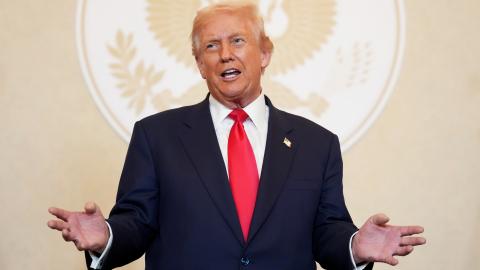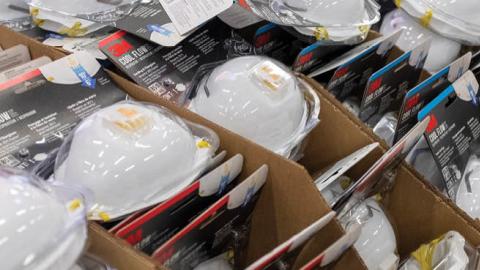America is finally using the World War II model for combating the coronavirus the right way, as my last column noted. That is, it’s maximizing the innovation and productivity of the private sector while minimizing government interference and bureaucracy, for everything from producing ventilators and N95 masks to testing kits and anti-viral drugs.
But there’s still another lesson from the World War II experience that isn’t so obvious, but it may be the most important of all—so important, in fact, that if we ignore it the American economy may never recover its power and primacy when this crisis is finally over.
That’s having an end game, a clear exit strategy once the danger is past and America needs to end the Great Lockdown and get back to work as quickly as possible, We need a strategy that won’t endanger public health and safety, but also won’t create delays in returning to normal that could cripple economic growth for a generation.
Producing victory in World War II wasn’t just about converting factories and plants to making planes and bombs and tanks. In some ways, that was the easy part. It was also about preserving what makes America strong, while building what will make America stronger, That meant keeping a strong civilian economy going even at the height of the war effort.
In one sense, the exit strategy in World War II was obvious: defeat the Axis. But there was another exit strategy underway as early as the summer of 1944, That was when the War Mobilization Board and other authorities began clearing the way for the termination of government contracts, so that companies and plants could get back to doing what they did best, produce for consumers not the government.
This was made possible by the other secret of the Arsenal of Democracy mobilization. The United States, unlike wartime powers like Germany, Japan, Russia, and even Britain, consciously avoided shutting down civilian production. Amazingly, the output of consumer goods was bigger every war year than it had been in 1939. Despite rationing by 1945 Americans were eating more meat, buying more shoes, using more gasoline and electricity than before the war. Restaurants and bars continued to serve customers; bowling alleys and country clubs stayed open. Even GE, a major wartime producer, still made light bulbs for its customers.
Of course, the nature of the coronavirus threat hasn’t made this continuity possible. But the conversion back to real life needs to be swift and decisive and lasting. The bottom line is, we can’t afford to have an economy on hold for another quarter.
Analysts like Dan Niles and others are predicting unemployment may jump to ten or even twenty percent; others say we could see a contraction of GDP in the second quarter of the same magnitude.
Let us be clear: the US economy won’t survive at that rate. That’s why the times call for a back-to-work czar, someone to lead a plan for transitioning back to normal and—even more important—ending the uncertainty about when and how America will get back to work.
It’s more than obvious that the current coronavirus task force isn’t up to this job. They don’t have experience in kickstarting a business, let alone an economy. We need someone who understands business and the risks to the country if we don’t get back to normal—but also grasps the dangers of returning to normal too quickly, or the wrong way (an abrupt shift to normal levels, with everyone descending willy-nilly on offices and stores, could restart the contagion).
My nomination for the job would be Mark Cuban. I know Scott Adams, who has been largely spot-on in his predictions and advice on confronting the virus crisis, has made the same suggestion on his blog. In my opinion, Cuban has the energy, determination, and knowledge we’re going to need to balance returning to normal with avoiding a second outbreak, while also having the communication skills it will take to convince the public—-and the markets—that we are on track to revive the economic growth we were experiencing before the virus hit.
Stimulus packages and business loans from Washington, no matter how big or well-administered, aren’t going be enough to get us moving again. The world needs to know America is getting back to business, safely but swiftly, and that those who would like to see us economically dead in the water are going to be disappointed.
The doomsayers who predicted the end of World War II would leave us with a new Great Depression, were proved wrong. Let’s prove the doomsayers wrong again, with a plan and strategy for ending the Great American Lockdown.
Read in Forbes



















